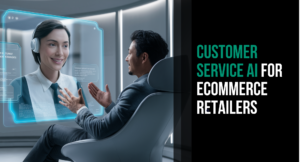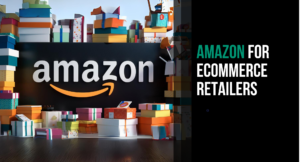In the dynamic retail landscape, artificial intelligence (AI) has emerged as a transformative force, reshaping how businesses operate and interact with customers. This AI for Retail Glossary aims to provide insights into the evolving terminology and technologies that drive innovation in the retail sector. From algorithms and anomaly detection to voice search and web scraping, each term reflects a crucial facet of how AI is integrated into various aspects of retail operations.
AI for Retail Glossary:
| Term | Definition |
|---|---|
| Algorithm | Instructions and rules that enable AI systems like ChatGPT to learn, adapt, and make decisions. |
| Anomaly Detection | Identifying unusual patterns in data that may indicate issues such as fraud or irregularities. |
| Automated Messaging | Utilising chatbots and virtual assistants powered by AI to communicate with customers, providing instant support and information. |
| Cognitive Search | AI-driven search engines that understand natural language queries enhance users’ search experience. |
| Content Generation | Using AI to create compelling product descriptions, engaging social media posts, and other textual content. |
| Customer Data Platforms | Platforms that consolidate customer data from various sources, enabling personalised customer experiences. |
| Customer Lifetime Value | AI predicts the future value of customers based on their past behaviours and interactions. |
| Customer Segmentation | Grouping customers using AI algorithms to target marketing campaigns more effectively. |
| Demand Forecasting | AI algorithms analyse past sales data to predict future demand, aiding in inventory management. |
| DALL-E | An AI system that generates images from textual descriptions, fostering creative content creation. |
| Digital Twins | AI-driven simulations of physical stores are used for modelling changes and improvements. |
| Facial Recognition | AI technology that matches faces to identities is often used for security and personalised advertising. |
| Federated Learning | Distributing AI training across devices to preserve privacy while improving model performance. |
| Fraud Detection | AI algorithms spot fake accounts and identify suspicious patterns, helping prevent fraud. |
| Intelligent Order Management | Using AI to optimise and automate order fulfilment processes, enhancing efficiency. |
| Intelligent Pricing | AI-enabled dynamic pricing that adapts based on competitors, demand, and other factors. |
| Inventory Optimisation | Minimising overstocking and shortages through AI-driven inventory management. |
| IoT (Internet of Things) | Connected in-store devices, such as smart mirrors, provide valuable shopper data. |
| Knowledge Graphs | AI-created databases linking products, customers, and content, facilitating comprehensive insights. |
| Lifetime Value Prediction | AI forecasts the future value of customers based on historical data and behaviour. |
| Localisation | Adapting marketing content for specific locations using geo-data, enhancing relevance. |
| Logistics Demand Forecasting | Predicting shipping needs using historical data and optimising supply chain logistics. |
| Loss Prevention | AI tools are designed to prevent retail loss due to fraud or theft. |
| Loyalty Programs | AI optimisation of customer loyalty programs and personalised rewards. |
| Machine Learning | AI systems that self-improve through experience without explicit programming. |
| Natural Language Processing | Enabling AI systems to understand and process human language. |
| Neural Networks | AI systems are loosely modelled on the neural structure of the human brain. |
| Personalisation | Using AI to tailor content, recommendations, and pricing on a per-customer basis. |
| Predictive Maintenance | AI predicts equipment failures before they happen, reducing downtime and maintenance costs. |
| Replenishment | AI optimisation of inventory ordering quantities and timing, ensuring efficient supply chains. |
| Retail Analytics | Data analysis and business intelligence facilitated by AI provide valuable insights. |
| Retail Chatbots | AI-powered conversational interfaces are used for customer service and engagement |
| Sentiment Analysis | Determining emotion and sentiment in customer content through AI analysis |
| Supplier Relationship Management | AI optimisation of retail supply chain relationships for efficiency and collaboration. |
| Text and Image Recognition | AI identification of images, video, and documents, enhancing content understanding. |
| Voice Search | AI speech recognition allows voice-controlled shopping experiences for customers. |
| Web Scraping | AI tools that scrape data from websites provide valuable information for analysis and decision-making. |
As the retail landscape continues to evolve, the integration of AI technologies is composed to redefine customer experiences, optimise operations, and drive innovation across the industry. This AI for Retail glossary serves as a comprehensive guide to navigating the intricate world of AI in retail.
BIO
Kelly Slessor, is an Ecommerce Coach and a digital marketing expert. Passionate about retail, hospitality and retail service providers. As the founder and CEO of Shop You, an AI powered personalised virtual shopping mall she has spent 20 years building retail technology that responds to customer needs, drives conversions and increases revenue. Over the past year she has worked with over 1000 retailers and hospitality providers. If you want discover more about digital growth and optimisation, work with me.







